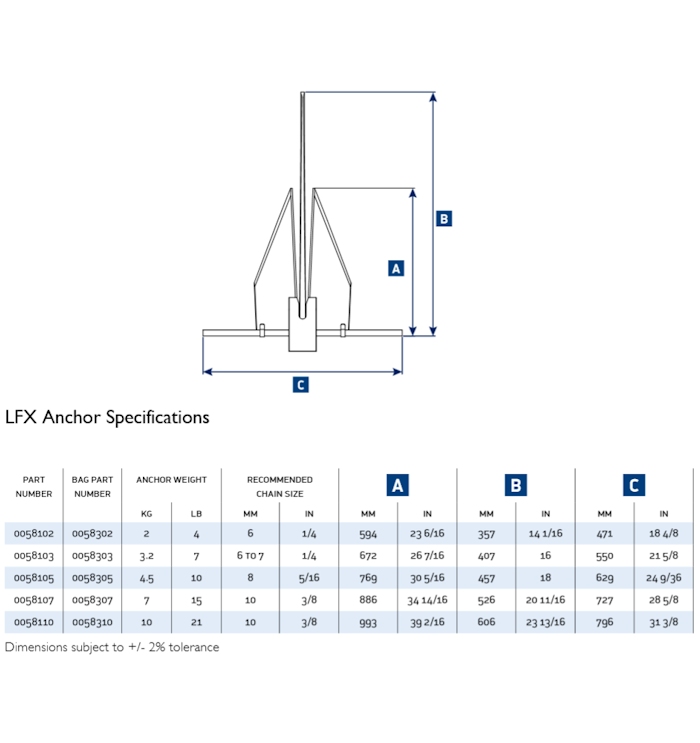The 8-Minute Rule for Fluke Style Anchor
Wiki Article
Getting The Fluke Style Anchor To Work
Table of Contents7 Simple Techniques For Fluke Style AnchorThe Facts About Fluke Style Anchor RevealedA Biased View of Fluke Style AnchorFluke Style Anchor Can Be Fun For Anyone
Claw supports are much easier to establish, much less most likely to foul, and also simpler to reset if they drag. Plow-style supports are the most usual type of support used on small to medium-sized watercrafts.They are a lot more effective at establishing in soft bases, and also they have a higher holding power-to-weight proportion. Mushroom supports are the biggest and also heaviest kind of anchor, and they are usually utilized on big boats or in deep water. They have the highest possible holding power of any kind of kind of anchor, but they can be challenging to deploy and fetch.
Fluke supports are typically made of high-grade materials such as galvanized steel and also are build to last. Fluke support dragging can be a discouraging issue for boaters.
This gadget attaches to the support line as well as stops it from turning. Another alternative is to use a longer anchor line.
A Biased View of Fluke Style Anchor
Examine the anchor itself to see if it is harmed or if the flukes are not dug in appropriately. If so, attempt resetting the anchor. If all else falls short, you can try relocating the watercraft to a various place.This layout permits a proper setup no matter the angle the anchor lands. When picking your next anchor see us right here at Wholesale Marine. We offer a company structure of skilled client service reps to aid you as you browse our products. Our cost match warranty, same-day shipping, as well as totally free delivery for carts over $99 are all cherries on top of our top quality merchandise.
By Tom Worry, Last upgraded: 5/28/2020 Anchor rodes consist of a length of chain, rope or a combination of rope and chain that attaches a support to a watercraft. The rope part of support rodes commonly includes nylon three-strand, 12-strand or double-braid line. Nylon is the material of option, due to the fact that it is flexible and able to take in the shock tons experienced when anchoring - Fluke Style Anchor.
Many tiny watercrafts use anchor rodes made entirely of three-strand nylon line. This is because all-rope rodes are light-weight, affordable and simpler to stow than rope-chain or all-chain rodes. Although all-rope rodes can be quite solid, they have a peek at these guys lack the chafe resistance of chain and are for that reason not proper for securing near coral, among rocks or in anchorages with whole lots of rise and wave activity - Fluke Style Anchor.
Fluke Style Anchor Things To Know Before You Get This

This lowers the requirement for long scope (other than in superficial water) because the chain is hefty and also rests on all-time low till Get More Information serious conditions are encountered, when even more extent might be required. Given that chain has extremely little flexibility, treatment must be required to protect against the chain from coming to be "bar tight" in high winds by making use of a snubber constructed from nylon line.
click site It is moderately light (as little as 65 lb.) and also significantly solid. Quality 43, called G4 or HT; made from high-carbon steel. G4 is the recommended chain for anchoring or windlass applications, and has twice the working load of BBB chain, so you can use a smaller size with the same toughness.
BBB or "Three-way B" has a consistent pitch short web link, as well as works well on windlass gypsies. BBB used to be one of the most popular kind for windlass designs of the past, yet has been changed by G4. Evidence Coil does not have an uniform pitch as well as does not work with support windlasses.
Fluke Style Anchor Fundamentals Explained
Little galvanized shackles attach the support to the size of chain, and attach the chain to the thimble on the anchor line. Fluke Style Anchor. Keep in mind to make use of the "following size up" in irons; a length of 1/4" chain would be matched to a 5/16" bind. This system, with a lengthy length of three-strand nylon line, a modest length of chain and also a correctly sized support will please the needs of the bulk of seafarers, with boats up to the 30' dimension array.
High-strength chain like these enables you to decrease a size which minimizes the chain's weight by regarding 30%, while achieving the same workload capacity as well as supreme toughness. Matching anchor chain to a details vessel can be difficult, since the windage of the vessel is most likely the key option aspect, and also windage is hard to figure out.
Report this wiki page